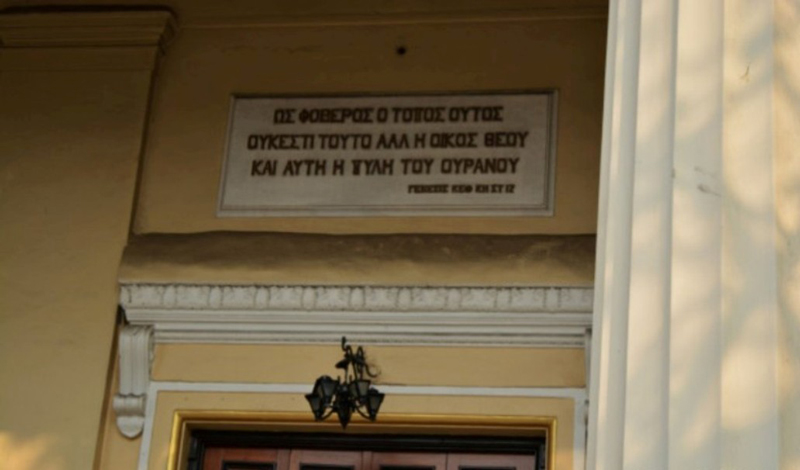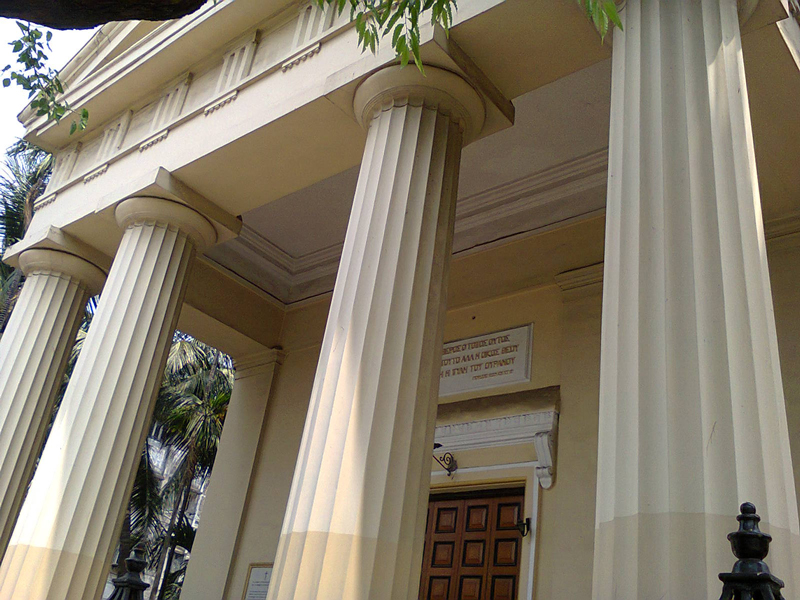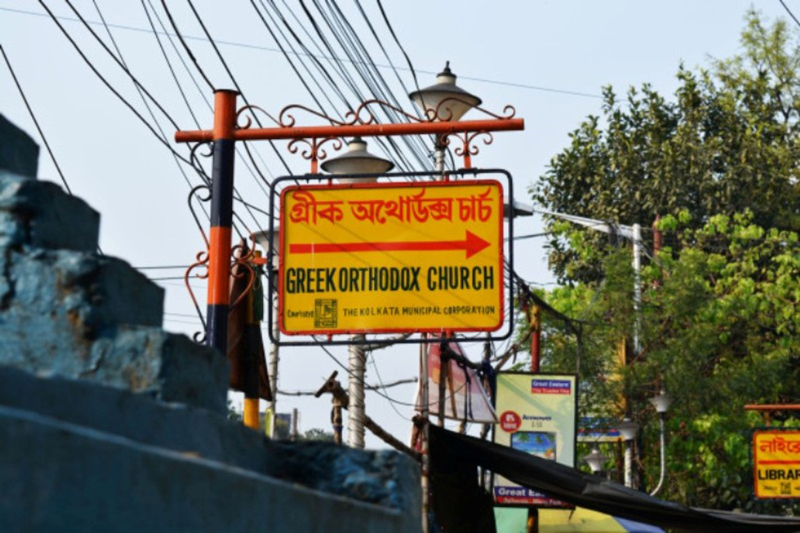
Located amidst the hustle and bustle of the normally busy area in Kalighat, the graceful and dignified building of the present Greek Orthodox Church of Calcutta resembles almost like a Parthenon temple. However, with its four majestic Doric columns in the portico supporting the huge pediment, the Church seems to be desolate and all alone in a confused crowd. Apart from its beautiful structure that stands silently next to the Kalighat tram depot and the inscriptions in Greek on plaques on the walls, there is little to suggest that the immigrated mercantile community of Greeks had constructed this church, one of the most carefully maintained buildings in Calcutta.
During the early days of Calcutta, many Greek traders rushed to the city, along with other European people. They emigrated mainly from Philippoupolis, which is now known as Plavdiv and from Adrinopolis. From 1768 to 1778, Russia and the Ottoman Empire were at war with each other and the victory of Russia in that war forced large numbers of Turks and Greeks to leave their country, who mainly opted to sail to Calcutta.



Initially, like most of the other European communities, the Greeks started to flock together in the vicinity of the present Lalbazar-Kolutola area and soon build a modest church in 1752, known as the Greek Church of the Transfiguration. However, within a short time, the second Greek Orthodox Church opened its doors on 6 August 1781 in Amratala area, near the present Portuguese Church, during the tenure of Warren Hastings. The church was built mainly at the instance of Haji Alexios Argyree, a prominent Greek merchant of Calcutta, whose family had borne a large part of the cost of the building, while the balance was raised by public subscription. It is maintained that, Warren Hastings was also involved in raising funds. Later, the church was shifted to the present location, near the Kalighat Tram Depot in 1924. The foundation stone of the new proposed building was laid on 3 Nov. 1924 and was consecrated a year later.

Marble plaques at the entrance of the Greek Orthodox Church welcome the visitors to the church in Greek. The colonnade corridor leads to the beautifully polished, tall wooden doors to the prayer hall. The elegant interior with marble flooring is neatly maintained and is aesthetically adorned with three enormous chandeliers, shaped like brazen chrysanthemums turned upside down. The altar of polished wood is richly decorated with beautiful paintings on canvas, relating the life of Christ after his transfiguration, Jesus and his apostles, the Virgin Mary and the archangels Gabriel and Michael with their swords. There is a painting of St Catherine in one corner.
The door to the sanctum Sanctorum contains panels depicting the Annunciation with Mary and the angel. The paintings, drawn in the late 19th Century style, are works of D. Tsevas of Athens. A printed copy of an ancient icon is displayed in front of the altar which the churchgoers kiss in the course of the service, followed by sanctification.


The thriving Greek merchant community of Calcutta started to leave the city after the independence of India. As the Greek population declined drastically, the Greek Orthodox Church in Calcutta became non-functional from the late 1960s and finally closed its doors. Much later, in 1991, Fr Ignatios (Sennis), a hieromonk (a priestmonk) from Mount Athos, arrived in Calcutta and reopened the church, after a lot of renovations and repairs. The Philanthropic Society of the Orthodox Church was also founded by him during that time. Unfortunately, it was a very late effort, since by that time Calcutta was devoid of any pure Greek.
As a result, today the Greek Orthodox Church in Calcutta is mainly used by the local Bengali converted Christians and Sunday services are held in Bengali. But, since funds from abroad are drying up, the Philanthropic Society of the Orthodox Church is now finding it extremely difficult to fund its philanthropic activities.
